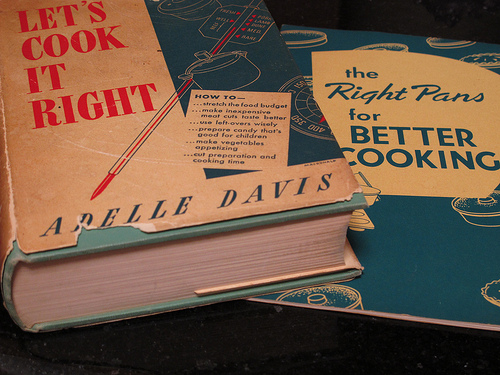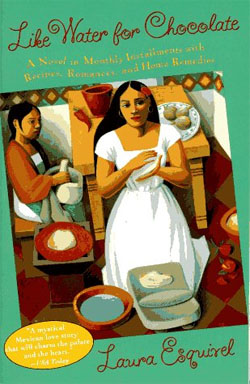There are books, and then there are cookbooks. The two are often thought to occupy entirely distinct territories in the literary world, but there are, in fact, specimens of genre-bending that hybridize fiction, autobiography, and recipe. These novels and memoirs are works in which the narrators are so acutely plugged into “the joy of cooking,” that the recipes function as plot points themselves. In honor of this emerging (and salivary) compound genre, here are eight novels and memoirs that double as excellent cookbooks.
Heartburn by Nora Ephron
Ephron’s premiere novel is a roman à clef documenting the disintegration of her second marriage. Sound morose? It is! But Heartburn is hardly a Plathian tragedy. The frank prose is laced with Ephron’s signature dry wit, and each chapter is punctuated with her famous iterations of Americana culinary standards. From lima beans with pears to a classic brisket, first dates to divorce papers, the title is self-explanatory.
Shark’s Fin and Sichuan Pepper by Fuchsia Dunlop
This BBC World Service analyst-turned-food writer is a keen bridge between East and West. The author of several cookbooks, Dunlop's first foray into genre-bending produced Shark’s Fin and Sichuan Pepper: A Sweet-Sour Memoir of Eating in China. The autobiography details her fifteen years living in China and exploring its cuisine, as well as her subsequent years spent in English kitchens pondering the Anglo acceptability of serving such Chinese culinary conventions as fried caterpillars and rabbit’s tongue. Predictably, some of the accompanying recipes are… aspirational, but inclusions like, a simple fried rice, are both easily replicable and authentic.
Bread Alone by Judith R. Hendricks
This culinary take on The First Wives Club follows Wynter Morrison, a jilted wife, as she moves to Seattle and takes on an apprenticeship at a local boulangerie. Encounters with colorful bakery staff (blue-haired baristas, earth-mother lesbians, and the like) are peppered with classic bread recipes so that you, like Wynter, can channel your quotidian stress into lumps of dough.
Like Water for Chocolate by Laura Esquivel
This fictional depiction of turn-of-the-century Mexico is abundant with simple recipes for rustic, regional fare. In this retelling of the Cinderella story, Esquivel’s heroine, Tita, is forced to renounce her love for Pedro so that her older sister, Rosaura, may marry him instead. Forced to be at her tyrannical mother’s beck and call, Tita seeks solace in cooking — as does the reader. From simple cream fritters to an exquisite turkey mole with almonds and sesame seeds, Like Water for Chocolate serves as both a tearjerker and comfort food compendium.
Garlic and Sapphires by Ruth Reichl
The famed New York Times food critic and former editor-in-chief of the late, great Gourmet magazine has lived an eventful life: from living on a Berkeley commune to editing one of the greatest culinary magazines of all time. Garlic and Sapphires is an insider’s look at Reichl’s six-year tenure at The Times, a time when the New York restaurant scene was bursting at the seams. On top of infamous accounts of rocking the restaurateurial world—including knocking the fourth star off antecedent Bryan Miller’s review of Le Cirque—Reichl dots the pages of Garlic and Sapphire with recipes for such ample provisions as spaghetti carbonara and butter-sautéed Brussels sprouts. G&S is not for the faint of heart, literally and figuratively.
World of Pies by Karen Stolz
Karen Stolz’s coming-of-age novel perfectly captures the homespun unaffectedness of a Southern adolescence. We follow protagonist Roxanne as she encounters everything from nail polish, birth, and death; vignettes accented with recipes for unpretentious, rib-sticking Texan cuisine. (Which, as it so happens, exceed the “world of pies” in subject matter.)
The Abundance by Amit Majmudar
The story of Midwestern Indian transplants Mala and Ronak is pretty heavy, covering everything from intergenerational malaise to terminal illness to curry. In an effort to absorb as much cultural information as she can from her dying mother, Mala races through a catalogue of traditional Indian dishes—from naan to yogurt raita—as her brother prepares to pitch a television documentary on Indian immigrant life in America. Author Amit Majmudar matches this wonderful confluence of wryness and grimness with a sprinkling of jocularity like kari podi over chicken.
The Debt to Pleasure by John Lanchester
A sharply humorous paean to cuisine, Lanchester’s The Debt to Pleasure follows the comically snobbish Tarquin Winot as he travels from the English port city of Portsmouth to the South of France. The accompanying recipes are a concordant jaunt through the flavors of Europe, ranging in provenance from Irish stew to French lemon custard. And unlike any culinary novel before it, The Debt to Pleasure takes an unexpected turn when the true motives of our haughty narrator come to light (hint: think Bond meets Bourdain).
Jake Flanagin is a writer living in Washington, D.C., where he does story research forThe Atlantic magazine and writes about pop culture and social issues. He holds a B.A. in comparative literature from New York University and thinks the bagel situation in D.C. is deplorable. In his free time, he likes to watch reruns of Growing Pains and remains steadfastly ambivalent on the issue of Kirk Cameron.
Image Credit: Flickr user aedenhensley. Used with a Creative Commons license.
This blog post about great places to eat is brought to you by Nine Rabbits, the bestselling novel by Virginia Zaharieva now available from Black Balloon Publishing.
About the Book:
A restless writer's fiery enthusiasm for her family's culinary traditions defines her from childhood to passionate adulthood as she strives for a life less ordinary. Lush gardens, nostalgic meals and sensual memories here are as charming as the narrator herself.
About the Author:
Virginia Zaharieva was born in Sofia, Bulgaria in 1959. She is a writer, psychotherapist, feminist and mother. Her novel Nine Rabbits is among the most celebrated Bulgarian books to appear over the past two decades and the first of Zaharieva's work available in English.
KEEP READING: More on Books















 A Black Balloon Publication ©
A Black Balloon Publication ©